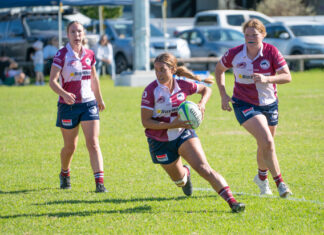JIM FAGAN
Cooroora Historical Society and Noosa Museum want to develop the once thriving and now desolate 19th century settlement and timber mill site at Mill Point at Lake Cootharaba as a tourist must for locals and visitors.
And part of its restoration work is a subsurface geophysical survey of the cemetery to map the gravesite of the 43 adults and children that rest there. Spokesman for the Cooroora Historical Society project, Bruce Cresswell, told Noosa Today that in terms of conservation the survey “will bring better management of the site which is currently heavily covered in grass up to a metre tall. The gravesite contains some of Noosa’s earliest settlers and is marked by a stone and a plaque.” Mr Cresswell said Mill Point was one of the most successful timber mills in the Cooloola area and is recognised as having State significance by the National Trust and the Environment Protection Agency (EPA). “It has all but disappeared into our history with only a few relics on the surface on a once bustling community of about 500 with houses, shops including a butcher, hotel, school and the saw mill. “It has now returned to nature yet it is vital in our life today as it is a place where we can reach into the past, learn of our pioneer forefathers and understand the drives that brought people to the place that today we know as Noosa.” In 2004 community concerns about the future of the site prompted the Queensland Parks and Wildlife Service, EPA, Noosa Council and Queensland University to collaborate on a detailed survey of the site. Its report described how in 1869 the saw mill opened at Elanda Point to process timber from the hinterland with the ultimate destination the thriving town of Brisbane. It told how 43 burials of nine men, four women and 30 children were recorded between 1873 and 1891. It adds: “From the mid 1880s a series of events took place that would influence the decline and closure of the mill in 1892. The Queensland Government introduced royalties to control wasteful cutting and competition from imported timbers but it reduced the output of local sawmills and kept the price of timber down. Softwood resources at Cootharaba were nearing economic exhaustion, having been exploited for close to 20 years. “Dairy farmers moved into the area early in the 20th century, but was never really successful because of the poor pasture available.” Mr Cresswell said the society had applied for a grant of just under $10,000 from the State Government’s Everyone’s Environment Grants for the subsurface mapping of the cemetery. “If we get the funding, we will invite the community to join in the survey and be part of the scanning and the results. “Mill Point has the capability of becoming a major tourist attraction. Our overall plan is to build on awareness of Mill Point and to create an understanding of Mill Point.”






